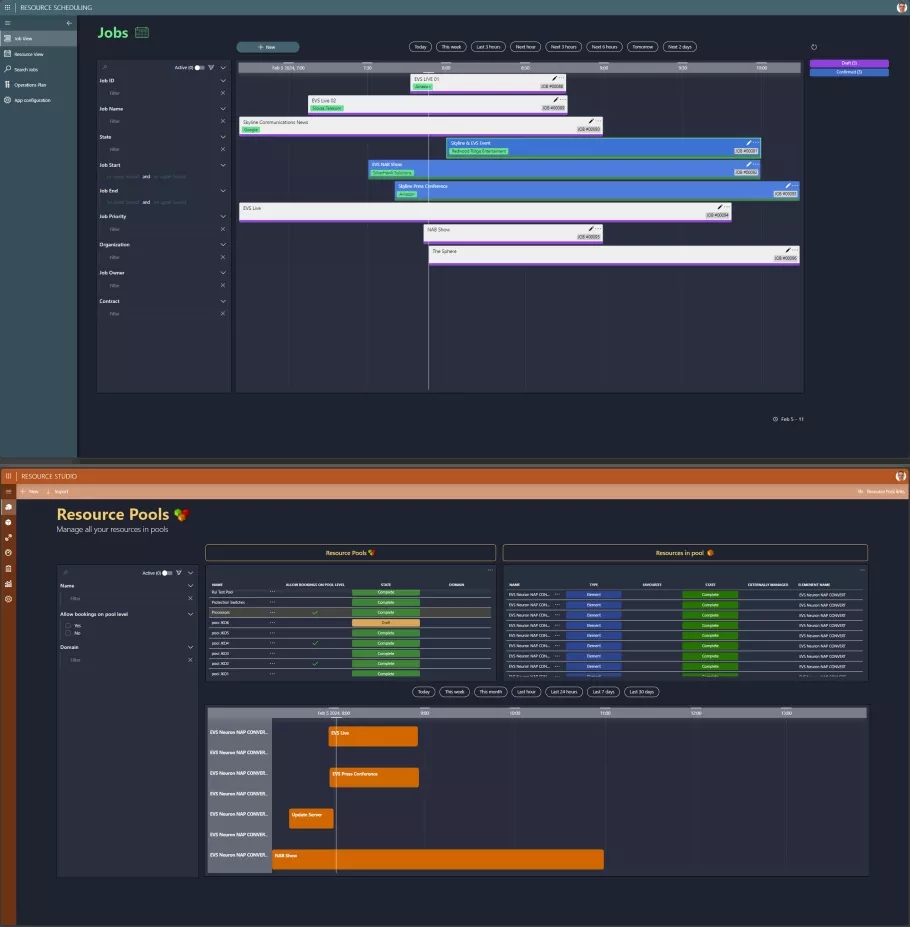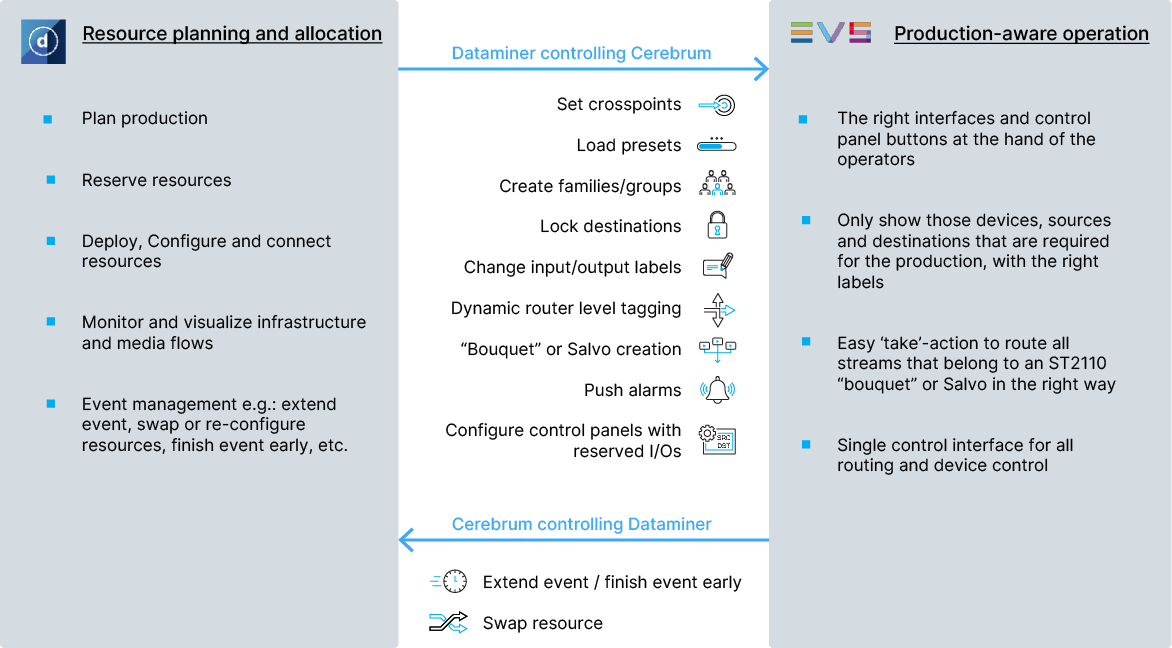Skyline - DataMiner
Certified solution partner

DataMiner does resource management, while Cerebrum takes care of real-time operations
DataMiner allows you to organize, plan and reserve event & production lifecycles including online (e.g. Neuron Converts, EVS production servers, Multiviewers, ...) & offline (e.g. people) resource allocation. In other words, it deploys, configures and connects resources - everything that is required before a production starts and after the production has finished.
Cerebrum is the perfect fit for real-time connection management, parameter control and single button press salvo execution - everything that is required during the production.
In combination with DataMiner, Cerebrum user interfaces are becoming event-aware. Operators will have the right interfaces and control panels at hand for each production, showing the right devices, sources and destinations that are required for that specific production, with the right labels.
DataMiner and Cerebrum constantly interact with each other. To connect allocated resources (the ones that have inputs or outputs), DataMiner sends crosspoint commands to Cerebrum. Thanks to DataMiner's implementation of Cerebrum's open Northbound API, DataMiner provides event context to Cerebrum and with that it helps making the Cerebrum UIs (both software and hardware panels) event aware. This allows Cerebrum to for instance:
- Change labels (operator name instead of operatorX, signal name instead of EXTx,...)
- Create families/groups
- Create (audio) tags for dynamic signal switching
Cerebrum can also control DataMiner via its "user-definable APIs". For example: buttons on Cerebrum panels to extend an event, finish an event early, swap a resource, etc.
Cerebrum and DataMiner are constantly interacting
